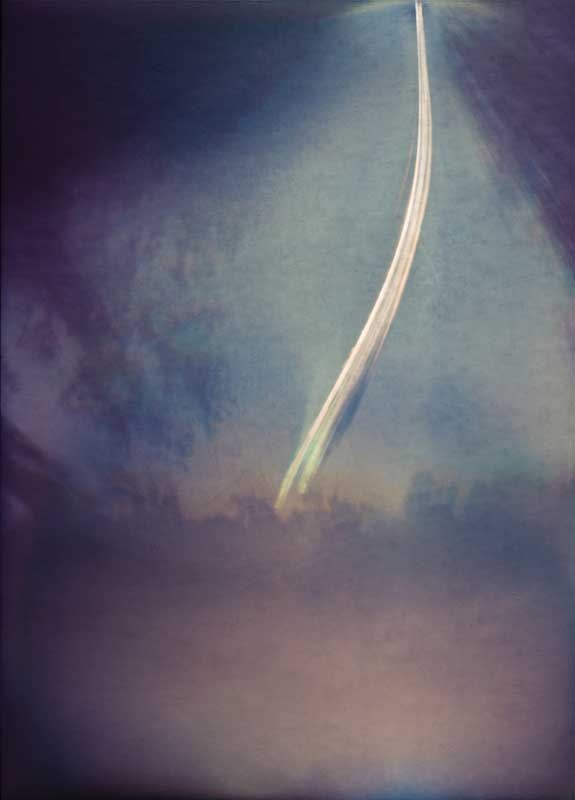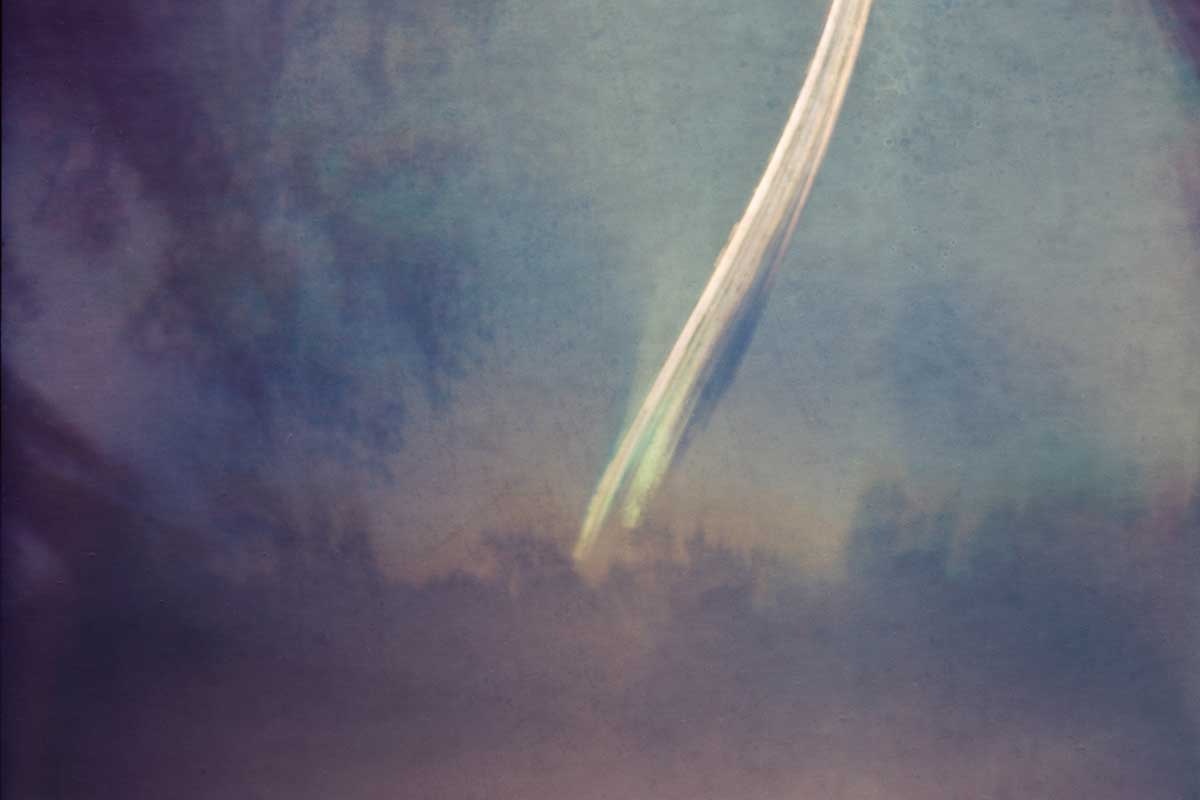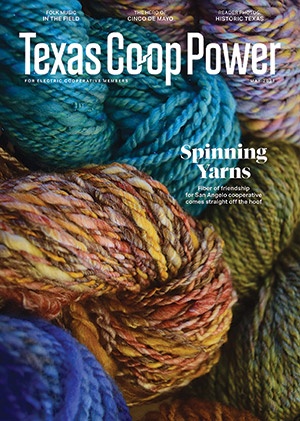The first solargraph I ever saw was a six-month exposure through a pinhole in a beer can by a teacher named Justin Quinnell, and it took my breath away for its beauty and its otherworldliness. I’d never seen anything like it, and of course, I wanted to try my hand at making one myself. But I had no idea how until I Googled Quinnell and landed on his website, where, in just a few minutes, he very cheerfully taught me everything I needed to know to make solargraphs of my own.
I made six pinhole cameras out of my Lone Star beer cans so I’d have a six-pack, then took them out to Plum Creek, our little ranch on the San Marcos River northeast of San Antonio. By now I’d been all over the internet to see what other solargraphers had done before me. I was looking for inspiration and instruction and found an abundance of both, so I had a pretty good idea of where I might aim my cans to get the most interesting compositions of sun striations over the landscape out at Plum Creek.
I then got a roll of ol’ Brother Duck and taped two cans to a fence post, three others to trees and the last one to a big mesquite stump out there on Indian Ridge where 10 or so years ago, I found several paleo points that date back to the end of the last ice age.
Remember to take the tape off your pinhole before you leave. It’s a real disappointment to go three or four months and then find you never exposed your paper to the sun at all.
I thought I’d give Mother Sun two or three months to work her magic in my cans, but after just a few days, I got itchy to see how it was going and hurried out there to cover the pinholes with tape and pull the cans off their perches.
Alas, a cow had chomped one of my cans into a wad of aluminum, but I hoped at least one of the other five would be a success.
I pulled the photographic paper out of the other cans, thrilled to see rather faint, rust-colored images. At that time, my assistant, Kate Bowie, knew how to work a scanner. So she scanned the paper “negatives” only to get a heartbreaking series of streaks across the images.
Bowie guessed she had scanned the exposures at too high a resolution, but to get another opinion, we emailed Diego Lopez Calvin to ask his advice. Calvin, Slawomir Decyk and Pawel Kula were the three pioneers who came up with the idea of scanning the negatives rather than trying to develop them using chemicals.
Calvin responded, saying that yes, we had indeed scanned our negatives at too high of a dots-per-inch setting and recommended a lower number.
That did the trick. So I bought another six-pack of Lone Star beer, and away I did go back to Plum Creek to try again with fresh cameras.

“Hole in the Sky” solargraph by Bill Wittliff
Courtesy TAMU Press
Three months later, I harvested my second batch of cans to generally good results, though again a cow had chomped one of my cans—but this time to a wonderful result. I called it 15 Days and a Cow Chomp. I thought it was wonderfully mystical, with its bright arcs over spires and stars and a totally unexpected gathering storm on the right side of the composition. I was hooked big-time now and put cans up all over Plum Creek. At one time I had more than 300 cans working out there, and the cows were in heaven chomping on them.
Sometimes the armadillos rooted my cans out of the ground and played train wreck with them. And sometimes the feral hogs bit right through them.
I duct-taped cans to rocks and bricks and cinder blocks so I could scoot them around under the trees or cactuses with a stick without getting pricked by the thorns.
Placing cans strategically near the river or Plum Creek or the duck pond gave wonderful and sometimes surprising reflections.
Sometimes people who have never seen a solargraph before ask me, “How’d you do that?”
“Oh,” I say, “I just drink a beer and make some art.”
This text is edited from SunriseSunset: Solargraphs From Plum Creek (Wittliff Collections Photography Series, Texas A&M University Press). The late Bill Wittliff and his wife, Sally, established the Wittliff Collections at Texas State University.


